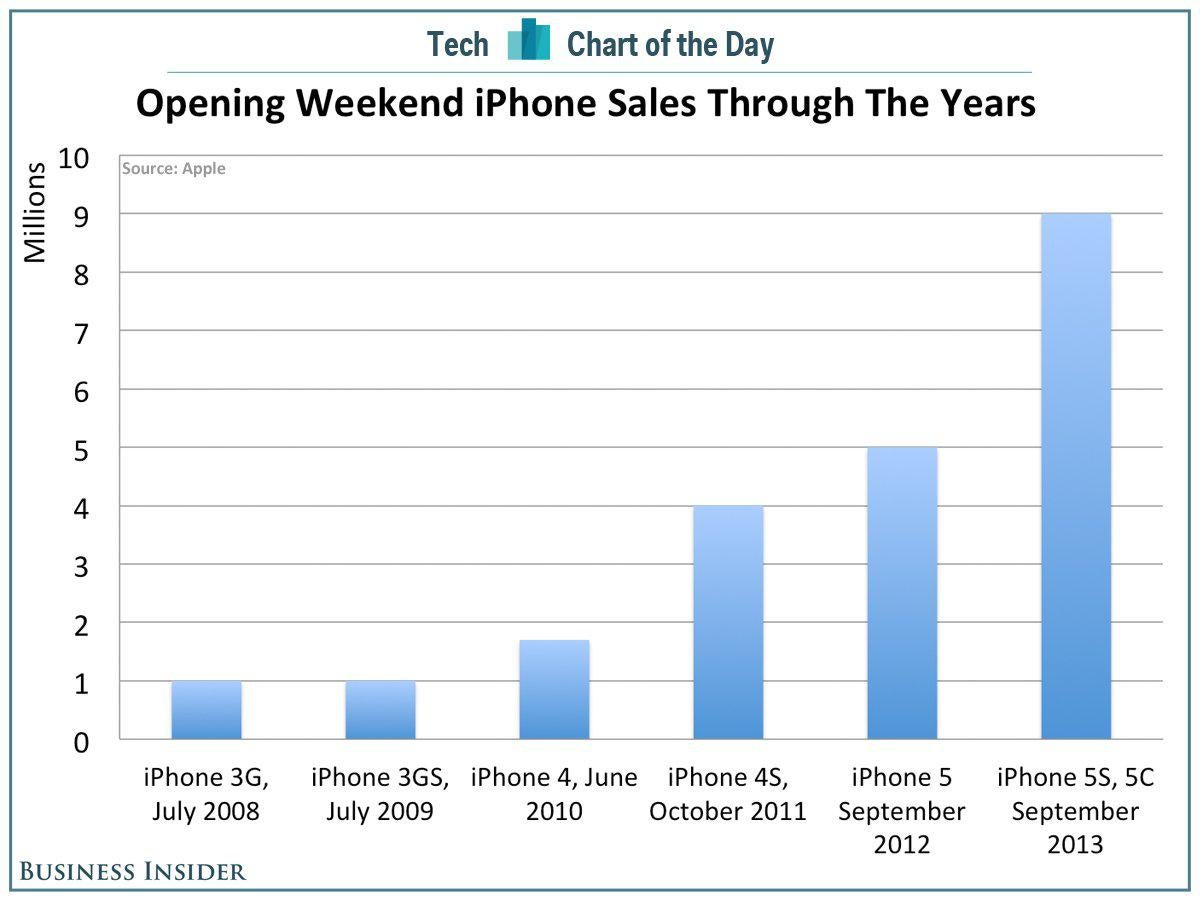This post originally appeared in Business Insider.
By Jay Yarow
Yesterday, Apple announced that it sold 9 million iPhones during the first weekend of 5C and 5S sales. Gene Munster, Apple analyst at Piper Jaffray, threw a little cold water on the number, saying the real iPhone sales number was closer to 5.5 million. He said 3.5 million 5Cs were “channel fill” at carriers, or other places.
What Munster is saying is that a lot of the iPhones Apple sold were bought by wireless carriers, not consumers. So the 9 million, he says, is not indicative of super-strong consumer demand for the new iPhones. Munster’s claim is a fairly serious one since it totally alters Apple’s opening weekend iPhone story.
So, who is right? Munster? Or Apple? Unfortunately for people who want a definitive answer, in this case, they both seem to be correct. Let’s start with Munster. For the conspiracists out there, it’s important to note that he’s a huge bull on Apple. He rates the stock “overweight” and has a $640 price target.
He’s not accusing Apple of “channel stuffing”—of selling millions more phones to carriers than the carriers can actually sell, thus creating misleading sales numbers. He’s also not saying that Apple changed the way it reports opening weekend sales—it didn’t. (Apple counts sales from its retail stores and online store as a “sale” when a consumer buys a phone. It counts sales to carriers as sales when the carrier buys the phones.)
What’s different this year versus previous years is that, this year, Apple appears to have made more than enough new iPhones to meet initial demand. In prior years, Apple and its carrier partners have basically sold out of iPhones in the opening weekend. This year, Munster says, Apple and its carrier partners sold out of one of the two new iPhones, the more expensive iPhone 5S, but did not sell out of the new iPhone 5C.

Business Insider
Apple did launch two new models of the iPhone, though, the 5C and the 5S. So it sold inventory of both into its store and carrier channels. The 5C is essentially last year’s model, though, so people are not going to be in a huge rush to go to the store during opening weekend and buy the phone.
Munster believes, based on talking to his sources, that Apple came out of the weekend with 3.5 million 5C units still in carrier inventory—sold to carriers but not yet sold to consumers. We don’t know how accurate Munster’s number is. It seems unlikely that, without inside information, he can perfectly nail the exact number of iPhone 5Cs sitting in carrier channels all around the world. Maybe Apple had 2 million iPhone 5Cs still in the channel on Sunday night. Or 1 million. Or 4 million. Odds are that Apple sells that inventory in the next few days, so it’s not like it’s going to be sitting around and rotting.
But Munster’s broader point is accurate: For this and other reasons, it’s hard to make a clean apples-to-apples comparison between the 9 million iPhones Apple sold this year with the 5 million it sold last year. Apple sold iPhones through more carriers this year on opening day than it did last year. So sales that came later last year might have happened this year in the opening weekend. And, in the past, Apple only counted the new model of the iPhone when it announced opening weekend sales. That new model always sold out during the opening weekend, so channel fill was not an issue.
What does this mean for Apple overall? Munster concluded that Apple’s iPhone sales are off to a “solid start.” That seems to be a fair appraisal. Over the next two quarters, we’ll get a better read on sales of the 5C and the 5S as the hysteria of the opening weekend settles down. Those who viewed Apple’s “9 million” announcement as an indication that its sales growth is going to explode, however, might want to temper their enthusiasm. It’s likely that end consumer demand for iPhones was not 80 percent higher this year than it was last year.
See also: Prices on the Black Market For Gold iPhones Are Completely Insane
